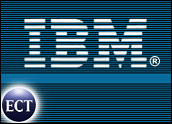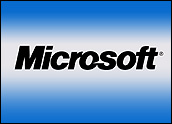
Looking to keep its hold on the top rung among supercomputer makers, IBM landed a contract to build what will likely be one of the five most powerful computers in the world for the U.S. Navy.
Known as Kraken, the machine will have a theoretical peak performance of 20 trillion calculations per second (teraflops), making it the fastest computer under the control of the U.S. military and one of the five fastest in the world overall. The new computer will be three times as powerful as the fastest existing machine now in use at the Navy’s Oceanographic Office Major Shared Resource Center.
Big Blue will also deliver a second, smaller machine running at a speed of 3.5 teraflops.
No exact price tag was put on the deal, but IBM said the contract would be worth “tens of millions of dollars,” and the Department of Defense said the machine will cost less than $100 million.
The Navy plans to use the supercomputers to improve modeling of weather systems and to speed the design and modeling of next-generation aircraft and submarines.
“The tremendous size of this system will allow us to explore, as never before, the limits of scalability for our key applications and our ability to harness the massive power of ultra-scale, high-power computer systems,” said Cray Henry, director of the computing modernization programs for the Defense Department.
Hybrid System
The machine will be some 386 IBM eServers running nearly 3,000 partly customized processors, IBM said, making use of IBM’s clustering technology. The system will run on IBM’s Power4+ processors and IBM’s AIX version of Unix.
That extends a trend among the top machines in the world to use clustering and will give clustered machines even more bragging rights at the top of the list of the world’s 500 fastest computers, according to Jack Dongarra of the Innovative Computing Laboratory at the University of Tennessee.
Dongarra, who helps compile a semi-annual list of the world’s strongest computers, told the E-Commerce Times that IBM is eager to keep its claim to powering more supercomputers than any other company.
Clustering Thrust
“It gives a vendor bragging rights,” he said. In the case of a vendor such as IBM, which had made clustering a centerpiece of its overall technology thrust, it helps them prove their approach can work on a grand scale.
“More installations are opting for clustering because of the flexibility it offers,” Dongarra added.
The Navy said IBM’s ability to build a system that would quickly revert to backup in the event of a crash was a key consideration in awarding the contract. It was not clear which other companies had bid for the right to build the machines.
Fierce Competition
The Navy has bought supercomputers from IBM in the past, but has also used its competitors. In 2001 it bought a Cray machine but switched to Big Blue in 2002 for a machine dubbed Blue Ocean.
In part because of the advances in clustering technology, IBM is facing increasing competition for providing the largest machines. Last month, Apple announced that it would build a machine for a U.S. Army contractor and Hewlett-Packard, until recently, had a hand in more of the top supercomputers worldwide than IBM.
Aberdeen Group Chief Research Officer Peter Kastner told the E-Commerce Times that more companies these days can lash servers together to produce high-powered machines.
“It used to be if you needed a machine this powerful, you had only a handful of places to turn,” Kastner said, noting that because of the scarcity of such machines, there was little price competition. “That’s no longer the case.”














































Social Media
See all Social Media